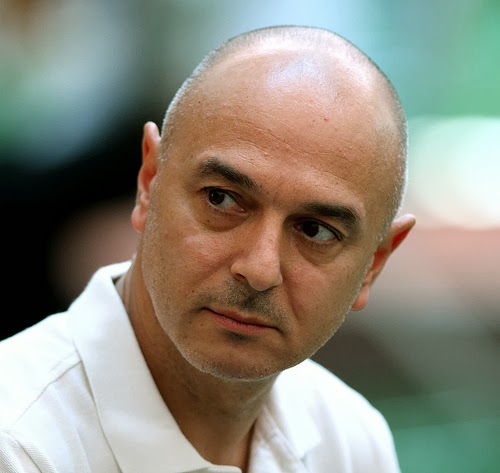Research for FourFourTwo magazine
Marc Bartra, Barcelona centre-back, born 15
January 1992
In a summer in which Barcelona were hurling huge bids in a desperate attempt to sign an established centre-back, Bartra coolly remarked that “perhaps the club doesn’t
need to buy another". And when a spot in the side became available due to an injury to Javier Mascherano, the La Masia graduate backed his statement up with some statistically remarkable performances. After his first two
league games of the season, Bartra had registered: a goal, 94% passing
accuracy, over six tackles and interceptions, and six clearances. He was dominant too: winning 83% of
tackles and 70% of aerial duels.
Koke,
Atletico Madrid central midfielder, born 8 January 1992
The stocky Jorge
Resurreccion (Koke) has played in every Spanish youth team, from the U16s to
U23s. After a fine start to the new campaign, Koke has put himself in contention for a starting place with the seniors as they prepare to defend the World Cup. The Atletico todocampista leads the assists chart after eight games with six, and has scored two. He takes free-kicks and corners and is both hard-working and disciplined. Spain are in need of reinvigoration and Koke's do-it-all approach could be the perfect remedy. His name means resurrection, after all.
Léo Baptistão, Atletico Madrid striker, born 26 August
1992
The Brazilian showed enormous potential in an
injury-disrupted first season at Rayo Vallecano and was snapped up by Atletico
in the summer, whom he scored the winner against in a 2-1 win. Having lived in
Spain since 16, he may follow in his teammate Diego Costa’s footsteps and
obtain Spanish citizenship, where he will be called up immediately to the U21
side. At club level, however, Baptistao faces a mean task to oust the even meaner Costa as Atleti's leading attacker.
Alberto Moreno, Sevilla left-back, born 5 July
1992
An ever-present in
the excellent Euro U21 Championship winning side, Moreno was called up to the seniors for the World Cup 2014 qualifiers against Belarus and Georgia in October, after making only 16
first team appearances with boyhood club Sevilla. On the same day, Sevilla moved quickly to resign Moreno until 2018. The new deal contained a 30m euro buyout
clause as the club saw the risk in losing him for cheap, like Valencia with Jordi Alba. Indeed, Moreno is very much a left-back in the mould of Alba: short and fast, eager to join the attack when possible but rarely neglects his defensive duties.
Pablo
Sarabia, Getafe midfielder, born 11 May 1992
In a golden age of Spanish attacking
midfielders, Sarabia is one of the hottest talents. He is versatile and can
play on either flank or in the hole, and possesses excellent long-range shooting and supreme
skills. He captained the U19 team to their Euro 2011 Championship win and is a Real Madrid youth
product, who have a buyback option on Sarabia after selling him to Getafe in 2011.
It is highly likely Real will exercise it should Sarabia
turn his raw potential into ability.
Cedric,
Real Betis right-winger, born 8 March 1992
Possibly the bargain of the summer – and
the player paid the fee himself. Cedric bought out his contract from Liga
Adelante side Numancia for a meager 1 euro 20
cent! The 5’6” winger joined Real Betis where he has made an
instant impact, shredding Madrid’s back line before setting up Vidal Jorge Molina
for a lead at the Bernabeau, and he nearly repeated the trick only moments later.
With electric dribbling and composure to pick the right pass, expect big things from
the little Congolese.
Antoine
Griezmann, Real Sociedad left-winger, born 21 March 1991
One third of a
fearsome front-line that fired Real Sociedad to their first top four finish
since 2002-13, Griezmann combines rapid acceleration with close dribbling.
Check out his overhead kick against Lyon in which Sociedad dismissed the French
side 4-0 on aggregate to reach the Champions League group stages for proof of
his technical brilliance. Griezmann scored the only goal as Sociedad beat Deportivo on the final day of the season to secure
fourth.
Iñigo Martínez, Real Sociedad centre-back, born
17 May 1991
Few players, if any, can claim scoring a better first league goal than Inigo Martinez. In the 61st minute on October 2011, Martinez struck an equaliser from his own half against
bitter Basque rivals Athletic Bilbao. Remarkably, the mobile defender repeated the trick a month later, only this time in the 90th
minute to secure a 3-2 win at Betis. Had
a wonderful 2012-13 season: provided the stability for Real Sociedad’s
counter-attacking game that resulted in a fourth-placed finish and formed a
formidable partnership with Marc Bartra at the Euro U21 Championship
that didn’t concede until the final. Now in the senior squad.
Richmond Boakye, on-loan Elche striker, born 28 January
1993
The striker is a
winner: his goals helped Sassuolo to the 2012-13 Serie B title and promotion to their first
season in Serie A in the club’s 91 year history. Boakye has been sent on loan to play for Elche this season and has already scored an equalising goal against Real
Madrid. He was promoted to the Ghanian first team after playing just seven games for
the U20s. A cool customer in front of goal, he takes his time but always seems
to find a corner, and could become prolific.





